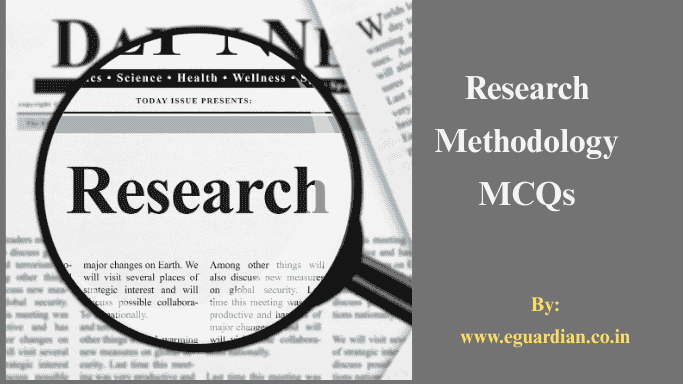Supply Chain Management Multiple Choice Questions and Answers for the Preparation of Academic and Competitive Examinations in 2025
Supply Chain Management Multiple Choice Questions and Answers.
1. The costs of inventory at various levels and the cost of logistics form the total cost of ___.
Ans. Distribution network
2. Distributors and retailers often rely on storage warehouses. (True/False)
Ans. True
3. At ___ level, the decisions are made with long-term objectives.
a) Performance
b) Strategic
c) Tactical
d) Operational
Ans. b) Strategic
4. A company can understand the customer only if it identifies the needs of the ___.
Ans. Customer segment
5. What is demand uncertainty?
Ans. Demand uncertainty is the uncertainty of customers who demand the product.
6. A new product developed will have low supply uncertainty because the design and production processes will not be fully developed. (True/False)
Ans. False. A new product developed will have high supply uncertainty because the design and production processes will not be fully developed.
7. Companies that intend to increase their performance level must move their competitive strategy and supply chain strategy towards the ___.
Ans. Zone of strategic fit
8. Each functional area creates its own independent strategy with the objective of optimizing its ___.
Ans. Performance
9. The intracompany – intraoperative scope is a scope of strategic fit that is limited to two operations in a functional area within a company. (True/False)
Ans. False. The intracompany – intraoperative scope is a scope of strategic fit that is limited to one operation in a functional area within a company.
10. In intracompany – intra-functional scope, different functions have conflicting ___.
Ans. Objectives
11. In intercompany – inter-functional scope, the two parties work together to minimize the amount of ___ required.
Ans. Inventory
12. Just-in-Time Delivery (JIT) is a service provided by ___.
Ans. Package carriers
13. Truck load shipping is best suited for transportation between manufacturing facilities and warehouses or between suppliers and manufacturers. (True/False)
Ans. True
14. Rail services are considered an ideal model for carrying large, heavy, or high-density products over long distances. (True/False)
Ans. True
15. ___ modes of transportation suit high-quantity shipments?
a) Air transportation
b) Water transportation
c) Rail transportation
d) Intermodal transportation
Ans. b) Water transportation
16. ___ are mostly used to transport liquids and gases.
Ans. Pipelines
17. Intermodal transportation is a combination of at least two or more modes of transportation. (True/False)
Ans. True
18. Mass transportation is more expensive than transporting goods in small quantities. (True/False)
Ans. False. Mass transportation is cheaper than transporting goods in small quantities.
19. Trip-related costs and quantity-related costs remain the same with all carriers. (True/False)
Ans. False. Trip-related costs and quantity-related costs differ from carrier to carrier.
20. ___ cost includes administrative costs, the rent of an office building, and so on.
Ans. Overhead
21. Which of the following is the cost involved in holding goods in a warehouse?
a) Facility cost
b) Processing cost
c) Inventory cost
d) Transportation cost
Ans. c) Inventory cost
22. Facility costs include the fuel of a vehicle used in transportation. (True/False)
Ans. False. Facility costs do not include the fuel of a vehicle used in transportation.
23. ___ cost is the cost involved in direct labor.
Ans. Processing
24. Higher service levels and fast delivery cost more. (True/False)
Ans. True
25. Which of the following are true with respect to traffic assignment?
a) Estimating the volume of traffic on a network
b) Estimating the turning movements at intersections
c) Both a) and b)
d) None of the above
Ans. c) Both a) and b)
26. All-or-none assignment model deals with different paths for every O-D pair. (True/False)
Ans. False. The all-or-none assignment model deals with a single path for every O-D pair.
27. ___ implements the all-or-none assignment model in steps.
Ans. Incremental assignment
28. The following traffic assignment model tries to estimate an equilibrium solution based on the all-or-none assignment model.
a) Capacity restraint assignment
b) User equilibrium assignment
c) Incremental assignment
d) System-optimum assignment
Ans. Capacity restraint assignment
29. ___ is based on Wardrop’s first principle.
Ans. User equilibrium assignment
30. System optimum assignment model is based on Wardrop’s second principle. (True/False)
Ans. True
31. For a high value-to-weight ratio shipment, increasing inventories is important. (True/False)
Ans. False. For a high value-to-weight ratio shipment, decreasing inventories is important.
32. As the degree of inventory aggregation increases, the cost of transportation goes up. (True/False)
Ans. True
33. Temporal aggregation of demands in a limited amount reduces the cost of transportation effectively. (True/False)
Ans. True
34. Which of the following is the approach that is learned and mastered by experience and self-learning?
a) Heuristic approach
b) Exact approach
c) Interactive approach
d) Combination approach
Ans. a) Heuristic approaches
35. ___ approach is also known as the optimal approach.
Ans. Exact
36. An interactive approach is approaching that uses tools like simulation, cost calculation, and graphics. (True/False)
Ans. True
37. A combinational approach focuses on time and money savings as a result of decreasing vehicle operating expenses, giving better services to customers, and improving productivity in fleet management. (True/False)
Ans. True
38. ___ modes of transportation best suit time-sensitive and emergency shipments.
a) Air
b) Truck
c) Pipeline
d) Water transportation
Ans. Air
39. To minimize the supply and demand imbalances in the supply chain, firms utilize various methods of ___.
Ans. Inventory management
40. ___ represents an investment in a product or material.
Ans. Inventory
41. ___ provides a low-cost service for export production.
a) Source facility
b) Offshore facility
c) Contributor facility
d) Outpost facility
Ans. b) Offshore facility
42. Source facilities need to be established in places where production cost is relatively high. (True/False)
Ans. False. Source facilities prefer to be established in places where production costs are relatively low.
43. A server facility is established as a result of tax incentives,___, and tariff barriers.
Ans. Local market requisites
44. ___ is established to gain the knowledge and skills of a certain region.
Ans. Outpost facility
45. If facilities have lower fixed costs many local facilities can be established because this reduces ___
a) Fixed costs
b) Exchange rates
c) Transportation costs
d) Taxes
Ans. c) Transportation costs
46. The availability of good infrastructure is an important pre-condition to locate a facility in a region. (True/ False)
Ans. True
47. Taxes and ___ affect the profits of a firm.
Ans. Tariffs
48. The goal of the network design models is to maximize the profit with the ___.
a) Reduction in transportation cost
b) Increased plant capacity
c) Suitable location
d) Satisfaction of the customer needs
Ans. d) Satisfaction of customer needs
49. The variable costs are the costs that are gained without considering the quantity produced or shipped from a facility. (True/False)
Ans. False. The variable costs are the costs that are gained as a result of the quantity produced or shipped from a facility.
50. The main objective of the ___ model is to minimize the transportation cost of both raw materials and finished goods.
Ans. Gravity location
51. The factors such as ___, costs, and also the situations of technology change must be considered while selecting a location.
a) Future demand
b) Cultural independence
c) Taxes
d) Workforce
Ans. a) Future demand
52. It is difficult in most of the supply chains to change ___ than storage facilities.
Ans. Production facilities
53. The performance of the available workforce and its morale has a great impact on the quality of life supported in the selected location. (True/ False)
Ans. True
54. The selection of international locations is often decided on the basis of ___.
Ans. Tax incentives
55. Physical inventory needs to be done at least once a year and as often as once a month, depending on the probability of loss of items. (True/False)
Ans. True
56. The basic equation used for ordering and re-ordering goods by all firms is ___.
Ans. Economic Order Quantity
57. ___ is the total cost of holding inventory.
Ans. Carrying Cost
58. Demand forecasting involves techniques including both informal methods, such as educated guesses, and quantitative methods, such as the use of historical sales data or current data from test markets. (True/False).
Ans. True
59. By combining inventory at a single location, the amount of safety stock that is necessary for a service level ___.
a) Decreases
b) Increases
c) Remains fixed
d) Halves
Ans. a) Decreases
60. Unlike other systems, Thrive Demand Forecasting automatically detects seasonal patterns where they exist and projects them in the forecast using proprietary harmonic soothing science. (True/False).
Ans. True
61. ___ is designed to leverage today’s computing power, efficiently crunching the math required to calculate fresh forecasts.
Ans. Thrive Demand Forecasting
62. Risk pooling involves the use of centralized inventory to gain benefits when demand is higher than average at some retailers and lower than average at others. (True/False)
Ans. True
63. The higher the ___, greater the benefit obtained from risk pooling.
Ans. Coefficient of variation
64. ___ bulk shipping has been a part of inventory management for a long time.
Ans. Bulk shipping
65. The fixed-order interval models are used when the supply is uniform at uniform intervals, such as 10 meters of cloth per week. (True/False)
Ans. True
66. The accounts department receives the invoice from the vendor. (True/False)
Ans. True
67. What are routine commodities?
Ans. Routine commodities are many standard items at a low price.
68. Leverage occurs when there is low-to-high expenditure. (True/False)
Ans. False. Leverage occurs when there is medium-to-high expenditure.
69. A ___ adds details to the mission.
a) Business strategy
b) Corporate strategy
c) Functional strategy
d) Vision
Ans. b) Corporate strategy
70. The strategic decision made by the purchasing department is considered as the ___ made in an organization.
Ans. Broader decision
71. For designing a purchase strategy, it is necessary to understand the ___ which in turn helps identify what purchasing has to achieve.
Ans. Business objectives
Conclusion:
The Supply Chain Management Multiple Choice Questions and Answers provide a valuable tool for enhancing understanding and preparation in the field. By engaging with diverse questions, users can refine their knowledge, test their comprehension, and bolster their problem-solving skills.
Whether preparing for exams, interviews, or seeking to deepen understanding, this resource proves invaluable. Consistent practice and active engagement with SCM concepts are essential for success in this dynamic field.
Embrace the opportunities for learning and growth offered by these MCQs, and continue to strive for excellence in Supply Chain Management endeavors.


